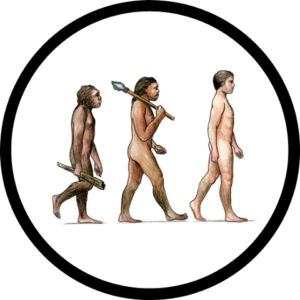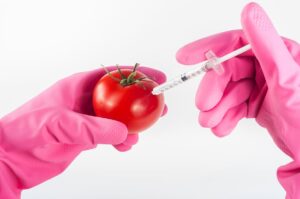- What is molecular biology?
- The study of biological processes at the molecular level, focusing on the structure, function, and interactions of biomolecules such as DNA, RNA, and proteins.
- What is DNA?
- Deoxyribonucleic acid, the hereditary material that carries genetic information in all living organisms.
- What is RNA?
- Ribonucleic acid, a molecule involved in various cellular processes such as protein synthesis, gene regulation, and genetic expression.
- What is a gene?
- A segment of DNA that contains the instructions for building a functional molecule, typically a protein or RNA.
- What is transcription?
- The process of synthesizing RNA from a DNA template.
- What is translation?
- The process of synthesizing a protein from an mRNA template.
- What is a codon?
- A three-nucleotide sequence in mRNA that specifies a particular amino acid during protein synthesis.
- What is a promoter?
- A region of DNA that initiates transcription of a particular gene.
- What is a ribosome?
- Cellular organelles responsible for protein synthesis.
- What is a mutation?
- A change in the nucleotide sequence of DNA.
- What is genetic engineering?
- The manipulation of an organism’s genetic material to achieve desired traits.
- What is a plasmid?
- A small, circular DNA molecule found in bacteria that can replicate independently of the chromosomal DNA.
- What is gene expression?
- The process by which information from a gene is used to synthesize a functional gene product, such as protein or RNA.
- What is a restriction enzyme?
- An enzyme that cuts DNA at specific recognition sequences, often used in genetic engineering to create recombinant DNA molecules.
- What is PCR (polymerase chain reaction)?
- A laboratory technique used to amplify and make copies of a specific DNA sequence.
- What is gel electrophoresis?
- A laboratory technique used to separate and analyze DNA, RNA, or proteins based on size and charge.
- What is a vector in molecular biology?
- A DNA molecule, such as a plasmid or virus, used to carry foreign genetic material into a host cell.
- What is a primer?
- A short nucleic acid sequence that serves as a starting point for DNA synthesis in PCR or DNA sequencing.
- What is a cloning vector?
- A DNA molecule used to carry foreign DNA fragments into host cells for replication and expression.
- What is reverse transcription?
- The process of synthesizing a complementary DNA (cDNA) molecule from an RNA template using the enzyme reverse transcriptase.
- What is a recombinant DNA molecule?
- A DNA molecule that has been artificially created by combining DNA from different sources.
- What is DNA sequencing?
- The process of determining the precise order of nucleotides within a DNA molecule.
- What is a plasmid vector?
- A plasmid used to carry foreign DNA fragments into bacterial cells for cloning or expression.
- What is a DNA probe?
- A labeled nucleic acid molecule used to detect complementary sequences of DNA or RNA in samples.
- What is site-directed mutagenesis?
- The process of intentionally introducing specific mutations into a gene using molecular techniques.
- What is a reporter gene?
- A gene that encodes a protein with a detectable phenotype used to study gene expression and regulation.
- What is DNA ligase?
- An enzyme that catalyzes the joining of DNA fragments by forming phosphodiester bonds between adjacent nucleotides.
- What is a hybridization probe?
- A labeled nucleic acid molecule used to detect complementary sequences of DNA or RNA through base pairing.
- What is a gene knockout?
- The process of inactivating or deleting a specific gene in an organism’s genome to study its function.
- What is RNA interference (RNAi)?
- A cellular process that uses small RNA molecules to regulate the expression of specific genes by targeting mRNA for degradation or translational repression.
- What is the central dogma of molecular biology?
- The concept that genetic information flows from DNA to RNA to protein.
- What is a restriction fragment length polymorphism (RFLP)?
- A variation in the length of DNA fragments generated by restriction enzyme digestion, often used as genetic markers in mapping and identification.
- What is a transgene?
- A gene that has been artificially introduced into the genome of an organism.
- What is a molecular marker?
- A DNA sequence used to identify and track specific genetic traits in individuals or populations.
- What is a DNA library?
- A collection of cloned DNA fragments representing the entire genome or specific regions of an organism.
- What is a cDNA library?
- A collection of cloned DNA fragments representing the mRNA transcripts expressed in a particular cell type or tissue.
- What is a gene bank?
- A repository that stores and preserves genetic material, such as DNA samples or seed collections, for research and conservation purposes.
- What is a DNA microarray?
- A high-throughput technology used to simultaneously analyze the expression levels of thousands of genes in a biological sample.
- What is a Southern blot?
- A laboratory technique used to detect specific DNA sequences in a complex mixture by hybridization with a labeled DNA probe.
- What is a Northern blot?
- A laboratory technique used to detect and analyze specific RNA molecules in a sample by hybridization with a labeled nucleic acid probe.
- What is chromatin immunoprecipitation (ChIP)?
- A technique used to identify the DNA sequences bound by specific proteins in a complex mixture, such as transcription factors or histones.
- What is a ribozyme?
- A catalytic RNA molecule that can cleave or join other RNA molecules through enzymatic activity.
- What is a DNA repair enzyme?
- An enzyme that recognizes and corrects errors or damage in DNA sequences to maintain genomic integrity.
- What is a restriction site?
- A specific DNA sequence recognized and cleaved by a restriction enzyme, often palindromic in nature.
- What is a single nucleotide polymorphism (SNP)?
- A variation in a single nucleotide base pair within a DNA sequence, commonly used as genetic markers in population studies and disease association studies.
- What is a DNA methylation?
- The addition of a methyl group to the DNA molecule, often associated with gene silencing and epigenetic regulation.
- What is a molecular chaperone?
- A protein that assists in the folding, unfolding, assembly, or disassembly of other proteins to ensure proper conformation and function.
- What is a transposable element?
- A DNA sequence that can move or “transpose” within a genome, often causing mutations or altering gene expression.
- What is a telomere?
- The repetitive DNA sequence at the end of linear chromosomes that protects them from degradation and fusion with neighboring chromosomes.
- What is a ribonucleoprotein complex?
- A complex formed by the association of RNA with proteins, often involved in RNA processing, transport, or function.



